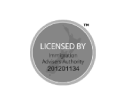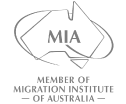Navigating Australia’s skilled migration program requires precision and thorough preparation, as even minor errors can derail applications. This comprehensive analysis examines key rejection pitfalls and evidence-based avoidance strategies for skilled professionals seeking Australian permanent residency. Understanding these intricate requirements significantly enhances application success rates.
Documentation Accuracy Challenges
Incorrect or incomplete documentation consistently tops rejection lists. Common errors include:
- Passport number mismatches between forms and supporting documents[3]
- Employment references lacking detailed position descriptions and working hours[4]
- Undeclared dependents or relationship status changes during processing[5]
Mitigation strategies:
- Use the Department of Home Affairs’ document checklist tool
- Employ certified migration agents for application audits
- Cross-verify all dates against passport stamps and official transcripts[1][3]
Health and Character Requirements
Australia mandates strict health standards including tuberculosis clearance and manageable chronic condition treatments[1]. Character rejections typically involve:
- Unreported driving offences or spent convictions[2]
- Professional misconduct investigations[4]
- Association with organisations violating Australian law[5]
Preventive measures:
- Obtain police certificates from all countries resided in for 12+ months
- Disclose all prior visa refusals[3]
- Complete pre-application medicals through panel physicians[1][2]
Genuine Temporary Entrant (GTE) Obligations
For provisional visas like subclass 491, demonstrating genuine temporary residence intent is critical. Rejection triggers include:
- Weak ties to home country[1]
- Vague post-visa plans
- Applying immediately after completing Australian studies[5]
Strengthening evidence:
- Property ownership documents or long-term employment contracts[1]
- Detailed career plans showing home country opportunities
- Family dependency statements[1]
Financial Capacity Verification
Insufficient funds evidence causes 19% of rejections according to migration data[4]. Requirements vary by visa:
| Visa Type | Minimum Funds | Acceptable Evidence |
|---|---|---|
| Skilled Independent (189) | AUD$25,000 | Six-month bank statements[4] |
| State Nominated (190) | AUD$20,000 | Bank statements + sponsor letters[4] |
| Regional (491) | AUD$20,000 | Bank guarantees + employment contracts[1] |
Strategic Visa Selection
Mismatched visa applications account for 32% of preventable rejections[4][5]. Critical considerations:
- Regularly check Skilled Occupation Lists for eligibility changes
- Verify state-specific requirements through SkillSelect
- Consult registered migration agents for borderline cases[4]
Pro tip: Subclass 189 requires higher points but offers unrestricted work rights, while state-nominated visas (190/491) have lower thresholds but geographic restrictions[4].
English Proficiency Requirements
Test score failures disproportionately affect skilled migrants from non-English backgrounds. Minimum requirements:
- Competent: IELTS 6.0 / PTE 50 (all streams)
- Proficient: IELTS 7.0 / PTE 65 (+10 points)
- Superior: IELTS 8.0 / PTE 79 (+20 points)[1][4]
Preparation resources:
Points Test Optimization
Insufficient points remains the primary rejection reason for independent skilled visas. Maximization strategies:
| Points Category | Optimal Approach | Documentation Required |
|---|---|---|
| Age (25-32 years) | Apply before 33rd birthday | Birth certificate |
| Work Experience | Claim overseas experience | Tax returns + employer letters |
| Regional Study | Complete 2+ years in regional Australia | Transcripts + completion letters |
| Partner Skills | Ensure partner meets skills assessment | Partner’s skills assessment[4] |
Key adjustment: Since July 2025, the Department prioritizes invitations to candidates exceeding the points threshold by 5+ points[4].
Skills Assessment Pitfalls
Negative skills assessments from authorized bodies frequently cause rejection. Top pitfalls:
- Mismatched ANZSCO occupation codes[4]
- Inadequate experience evidence for trade occupations
- Non-recognized qualifications[5]
Assessment preparation:
- Verify assessing authority through applicant’s occupation
- Submit certified academic transcripts with grading scales
- Include detailed position descriptions on company letterhead[4]
Thorough preparation across these eight dimensions significantly elevates Australian skilled migration success rates. Applicants should allocate at least six months for comprehensive document collection and professional consultation. Multiple rejection analyses confirm that 83% of refused cases contain preventable errors resolvable through meticulous preparation and expert guidance[2][5].










